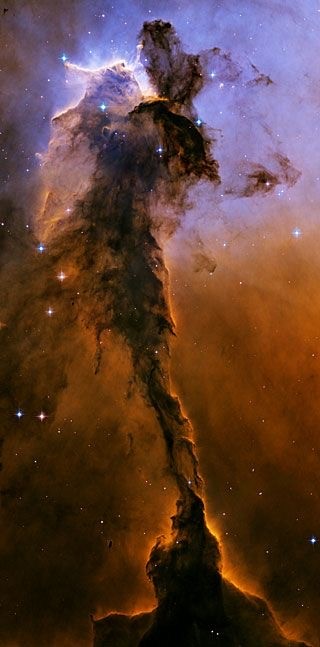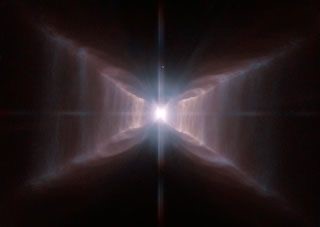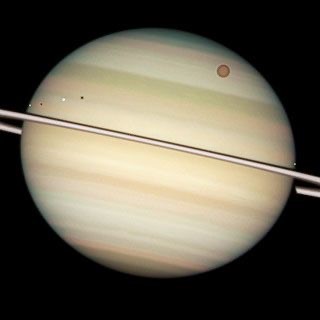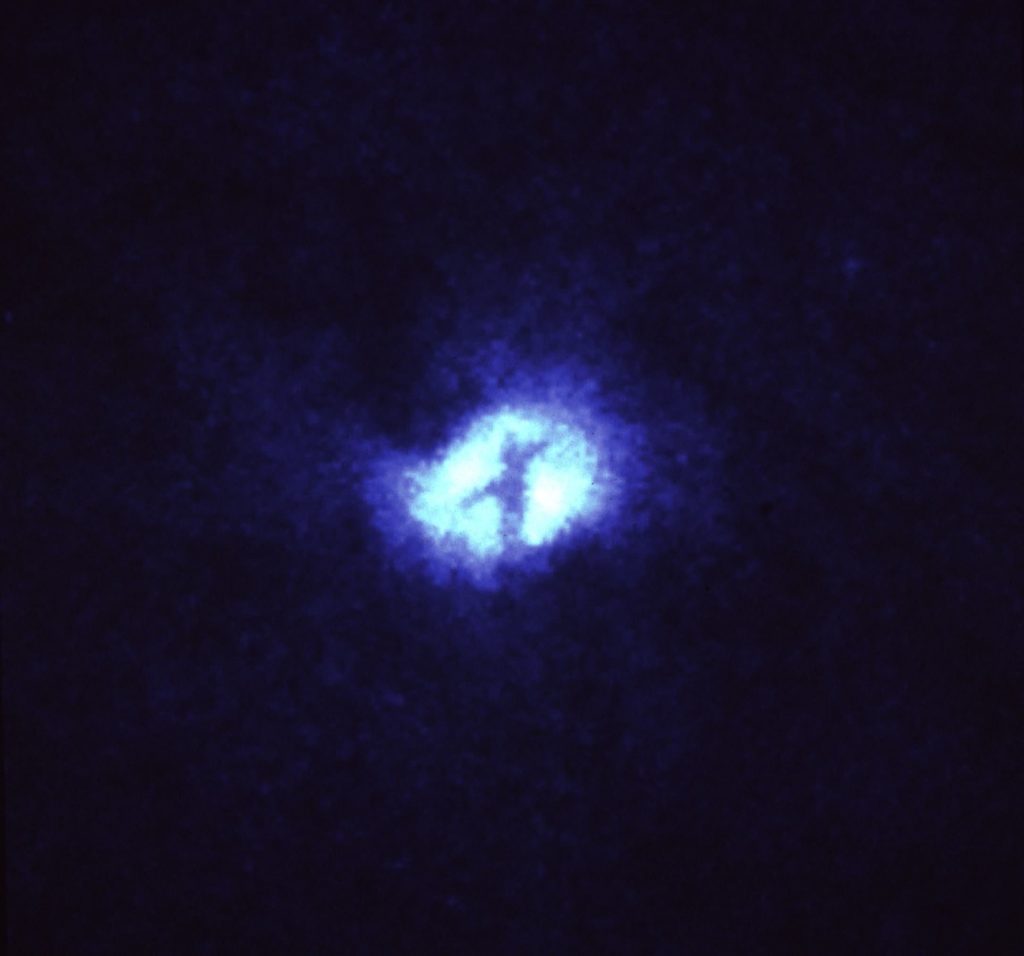(This essay is the first of two that together present some of the information that was to have been part of a day-long retreat on Holy Saturday, 2020, entitled “God in Deep Time: Showing Mercy to the Thousandth Generation.” This retreat was cancelled due to the Corona virus pandemic and related shelter-in-place order. It has since been recast as an online retreat experience. Both of these essays are available on the Hermitage Community Blog. This essay provides some background on “deep time” and the second essay, “Lament on Holy Saturday 2020” includes a confession and lament for Earth.)
INTRODUCTION

As I was working on this essay, a children’s song kept going through my head.
My God is so BIG, so strong and so mighty,
there’s nothing my God cannot do.
My God is so BIG, so strong and so mighty,
there’s nothing my God cannot do .
The mountains are God’s the valleys are God’s
the stars are God’s handiwork, too.
God is so BIG, so strong and so mighty,
there’s nothing my God cannot do.
God in Deep Time We are going to focus on this “so BIG” God. If we understand the context of our lives in what scientists call “Deep Time,” we will begin to recognize that we no longer accept the Biblical writer’s, cosmology (what we sometimes refer to as “worldview,” though that term is too narrow when we talk about the universe). Rather, we all already have a cosmological consciousness that takes us outside what the Bible presents us. So, we will begin by looking at the conception of the universe that is presented in our Bibles. Then we will look at the cosmological picture of Deep Time. Finally, we will return to a text from Isaiah 40 to see if Deep Time can help us set our understanding of Isaiah’s words in our current context. The text from Isaiah is fruitful for reminding us that God is so much “bigger” than we usually picture God.
THE THREE-TIER UNIVERSE
God in Deep Time
The Bible was written during a time when the earth was perceived as flat, bounded above by the heavens—where God dwells above among the sun, moon and stars—and below by the underworld— the place of the dead. This three-tier universe, limited on each side by the distances that humans had traveled by land, form the boundaries of what was known as “the ends of the earth,” in the mind of the Ancient Near Eastern writer. But, early in the second century after the birth of Christ, Ptolemy proved that Earth and the heavens were spherical and in motion. In the 14th and 15th centuries, Copernicus took up the idea again and proved mathematically, that Earth rotated around the Sun and not the other way around, as was assumed by the daily experience of seeing the “sun rise and set.” Declared heretical by the Church, which had finally been convinced of the “round earth” only after the great sea explorers of the 15th century ran into unexpected continents while trying to sail to China from Portugal, traveling westward. In another hundred years Galileo and Tyco Brahe assisted by Johannes Kepler reasserted Copernicus’ calculations and improved on them by actually observing the movement of the “heavenly bodies” through their newly improved telescopes. Then the Church finally, but reluctantly, capitulated by making space for scientific observation and inquiry but still holding fast to the worldview of the Scripture in its doctrines. This created a rupture between religion and science that has continued hemorrhaging to this day.
Unfortunately for us, those old ideas of the three tier universe, the centrality of Earth in the universe, the sun “rising and setting,” persist because of a theology that depends on these ideas as captured in Scripture. We find it hard to rid ourselves of the ideas that heaven is “up,” that we are at the center of the universe, or that what we can see is all there is. We are afraid of the mystery, of the sheer immensity, of what we cannot understand. And the ancient scriptures, based on an outdated worldview, echo our fears.
Pastor Paul R. Smith wrote a book entitled, Is your God big enough? close enough? you enough? Jesus and the three faces of God, a reimagining of the trinity through the lens of Jesus’ relationship with a God Jesus called “Father.” While I do not expect your views of God to change in an instant, I hope to open in you some different and maybe new ways of imagining God in deep time, or more properly, in eternity. We will be tackling only one-third of Rev. Smith’s project, “Is your God big enough?”by going on a tour of what scientists, theologians and artists show us about the cosmos and deep time, and then coming back to reflect on a passage from Isaiah.
COSMIC SHIFT

Scientists tell us that the universe, or the multi-verse, or what I am calling today the cosmos, began 13.8 billion years ago with a “big bang.” Though they don’t completely understand how this happened, they can see and describe the detritus of that explosion in what we call the universe with its galaxies, novas, super-novas, nebulae, comets, solar systems, black holes, black matter and speckles of light. Details of the formation of the cosmos are scarce and difficult for non-scientists to understand. So, we rely on models and metaphors to help us understand what this theory means for “life on earth.”
God in Deep Time
Ilia Delio, the Franciscan nun, scientist, and theologian upon whom I will rely for most of my scientific information here, gives an illustration of the human being in this context using a picture of a set of encyclopedias – a 30 volume set she calls The Encyclopedia of Life. Imagine, she says, that you have just such a set of books, lined up on a shelf. Each volume of the 30-volume set contains 450 pages. Each page represents 1 million years. The front cover of volume 1 is the Big Bang – the Beginning. Somewhere in the middle of volume 21, Earth has coalesced into a ball of molten minerals and is cooling into its present form of molten core, mantle, crust, and a gaseous envelope of atmosphere around the planet. In volume 22, life, in the form of micro-organisms, begins on Earth. About volume 29 (and remember, the set, so far, has 30 volumes), we enter Earth’s Cambrian Period. This is the period of Earth history when the single land mass surrounded by a single ocean begins breaking up to form our present-day continents and when the first complex animals burst onto the scene in the ocean, in the forms of sea sponges, trilobites, and tube worms. Life continues to complexify through volume 29. Finally, in volume 30 on page 385 of our 450- page book, in the end of the Jurassic period, dinosaurs go extinct. Mammals, the most complex life form so-far, first begin to appear on page 390. Finally, on the last line of page 450 of volume 30 of The Encyclopedia of Life, the final two words are “human beings.”
Yes, the cosmos has been around for a long time. Humans, the most complex and self-reflexive of the life forms on Earth are such new-comers that our whole history takes up only the final two words in a 30 volume set of 450-page-long books, with each page representing 1 million years. Now, our understanding of God as eternal, without beginning or end. This means that God was there, at or in, the Big Bang, in Deep Time. Yes, God is that BIG!
Physicists are only beginning to understand how this universe is put together. One of the recent (20th century) findings is that the universe does not exist in a flat plane. That is, those planetary models of the solar system, that flat spinning dinner plate with marbles affixed on it, is most likely an anomaly in the cosmos. With clouds of gas and intersecting wave-like time/space formations, the universe looks more like Gene Roddenberry’s vision in Star-Trek, with time tunnels and worm holes connecting vast portions of the universe so that if you find the precise “doorway” you will move light-years in a single nano-second.
And what really knocks our socks off is that matter, the stuff of the universe, is really nothing but energy. Those points of light we see in the night sky, the emanations from other suns millions of miles from earth, are as “real” as the chair you are sitting upon. Because the chair is just light and energy held together in such a way that it can bear a load of other light and energy—You! You’ve probably heard the famous quote from Carl Sagan that you are made of star-stuff. This idea has been around for awhile. Take the Crosby, Stills, Nash & Young’s 1970 hit, “Woodstock,” (written by Joni Mitchell) that keeps returning to this chorus:
We are stardust, we are golden,
We are billion year old carbon,
And we got to get ourselves back to the garden.
And, of course, the idea is older than 1970.
What bothers us and feeds our fears, is that what we’ve counted on as real keeps eluding our grasp. And theology has not been left out of this ephemeral soup. Paul Tillich in the early 20th century, articulated the idea that God is “precisely nothing.” Now, this is a technical definition since the word “nothing” contains the word “thing.” Tillich was simply reminding us what the theologians throughout the ages had already said, that God is not material, is not “made of” stuff. While this is a true assertion about the nature of God, it has always been a dangerous assertion. Just saying, “God is nothing” set John of the Cross at odds with the Spanish Inquisition in the 16th century and shut down the possibility of that truth finding its way into the hearth of our hearts.

We like to think of God with hands, a lap, a heart, able to carry us and comfort us with human-like touch. But, this, in fact, reduces God to being conceived in our image rather than the other way around. Bearing God’s image does not necessarily mean that God “looks like” us, but rather that we are imbued with an ungraspable “God-ness.” In that, lies our greatness and the mystery that we can never, ever, appropriate God, but that, at the same time, God is entangled in our being (the technical term here is “interpenetration”). We humans are not great on our own, but only as God-bearers, do we have a measure of significance. (This is an essential point to grasp when we come to the next essay dealing with how we care for our Earth home. Our significance is derivative, not normative: that is, we only exist to mirror God not to be god-like in our power and use and abuse of Earth.)
At The Hermitage, every day and for each guest who comes, we affirm by name, that each one is the “bearer of God’s infinite life.” This simple assertion serves to remind everyone both that they are significantly known and that they are significantly dependent. I challenge you to look in the mirror each morning and call yourself by name followed by the assertion that you are the bearer of God’s infinite life. It may change the way you go through your day.
HAVE YOU NOT KNOWN?
Now let’s read the scripture from Isaiah 40:21-31 and see if our new understanding of deep time can help us read the text for our time. I think Isaiah had and inkling of just how big God is.
Isaiah 40:21–31 (NRSV)
21Have you not known? Have you not heard?
Has it not been told you from the beginning?
Have you not understood from the foundations of the earth?
The prophet begins with a series of questions designed to elicit wonder in the hearer. “What is going on here? Of what is the prophet speaking?” It is also an insistence that the hearers remember. This is a natural knowledge, not a learned knowledge, one that has been passed down from the “foundations of the earth.”The prophet is asking, “What do you know in your deep-down place of instinct and intuition, about God?”
22It is [God] who sits above the circle of the earth,
that] its inhabitants [appear] like grasshoppers;
who stretches out the heavens like a curtain
and spreads them like a tent to live in;
In this verse, we clearly see the three story universe with God way up so high that people look like grasshoppers. If we read the old “three-story universe cosmology” into this, we can understand the point that the prophet is making. This God is as big as we can possibly conceive. So, in contemporary cosmology, perhaps God is igniting the spark of the Big Bang or God is siting at the printing press where our 30-volume Encyclopedia of Life is printed and is cranking out the pages of future volumes beyond our imagining.
23[this God] brings princes to naught,
and makes the rulers of the earth as nothing.
24Scarcely has their stem taken root in the earth,
scarcely has their stem taken root in the earth,
when [God] blows upon them, and they wither,
and the tempest carries them off like stubble.
One can only hope…
25To whom then will you compare me,
or who is my equal? says the Holy One.
26Lift up your eyes on high and see:
Who created these [the stars]?
[The One] who brings out their host and numbers them,
calling them all by name;
because [that one] is great in strength,
mighty in power,
one [of the stars] is missing.
Here is the prophet entering the cosmic starry realms that can be understood by someone holding any worldview. The prophet adds the personal dimension showing God naming the stars and taking a star inventory. This idea is later repeated in Jesus’ teaching when he says that God numbers the hairs of our heads and knows when a sparrow falls to the ground (cf. Mt. 10:26-33; Lk. 12:4-7). In the gospels, the teaching is about not fearing what others can do to you. Here, the context is similar, for in the next section we read:
27Why do you say, O Jacob,
speak, O Israel,
“My way is hidden from the Lord,
and my right is disregarded by my God”?
This is a complaint from the people of Israel, telling the prophet that God cannot find them nor does God listen to their complaint. The prophet is not impressed and questions the integrity of their complaint using as proof that the God who calls each star by name can surely not have lost any of them.
The prophet then concludes this hymn with a repetition of the beginning:
28Have you not known? Have you not heard?
[Our God] is the everlasting God,
the Creator of the ends of the earth.
He casts God in the role of eternal presence and source of all that is – Creator. But notice, the flat-earth worldview of “the ends of the earth” reenters here. We know to reinterpret this phrase to include the whole cosmos. We might say, “Our God was already present in Deep Time, 13.8 billion years ago at the Big Bang, and God fashioned even the tiny Earth and its tinier life forms with care.” That might have the effect on us that this phrase was to have on Isaiah’s hearers.
Then the prophet changes the direction of his vision. In the first part of this oracle, the focus is on the cosmic, the powerful rulers, the stars as signs of minute but distant and all-encompassing care. In this final section, the focus is on the interior person, inner strength, bodily stamina.
[God] does not faint or grow weary;
[God’s] understanding is unsearchable.
9[God] gives power to the faint,
and strengthens the powerless.
30Even youths will faint and be weary,
and the young will fall exhausted;
1but those who wait for [our God] shall renew their strength,
they shall mount up with wings like eagles,
they shall run and not be weary,
they shall walk and not faint.
In this section, the prophet repeats “faint” and “weary.” First about God and then about those whom God strengthens. God, who does not faint or grow weary, gives power to the faint and strengthens the powerless.
The admonition to “wait for God” is an encouragement to resist acting on one’s own power because, after all, even the young eventually succumb. Isaiah is not denigrating natural prowess or youthful energy. Rather, he wants his hearers to notice their dependence on God, because God is who God is. And knowing this is as natural as living on earth where “from its foundations” God has been known, heard, and revered. Then we discover that, to quote Ilia Delio directly, “The background of everything that exists is another existence. God is not something that can be proved or disproved. God does not merely exist nor is God a Being among beings. Rather, God is existence itself which means God can only appear in otherness, in that which exists…. Jesus shows that the infinite, transcendent One is infinitely near, so close that the lines between human and divine are often blurred. We cannot grasp this God of mystery but God grasps us in our infinite depth; for the mystery we name “God” is the mystery of our awakened consciousness to ultimate reality.”
So, we “wait for the Lord” not because God is too slow or lagging behind, but so that we can realize the strength of God within us and we are “renewed” to fly with the eagle of power and dominion, run without weariness, and walk without weakness because our lives are interwoven with God’s very being. Our waiting, makes us aware of what is already there and has always been there, in Deep Time.

The hymn writer, Isaac Watts, captures a bit of what it is like to participate in the cosmos as a Child of the God of Deep Time:
Were the whole realm of nature mine,
That were an offering far too small,
Love so amazing, so divine,
Demands my soul, my life, my all.

Thank you for this very meaningful essay and for posting it for us. God is ‘nothing’, God is all, God is God, so BIG!